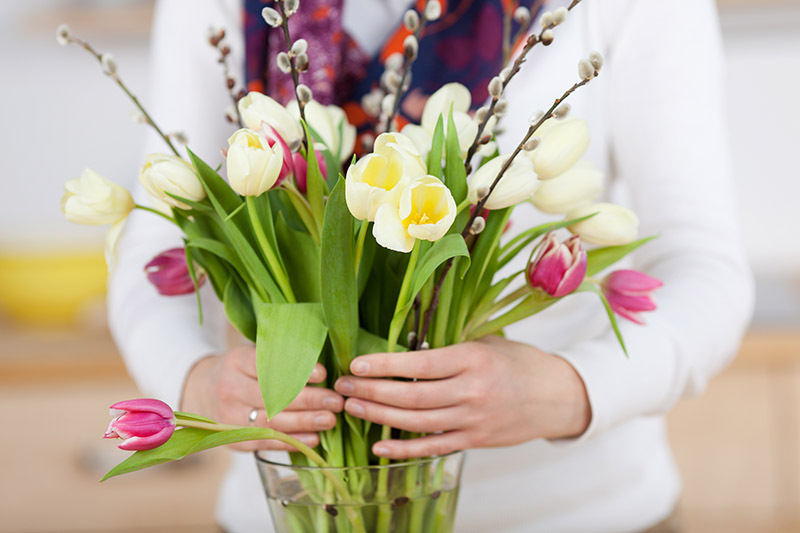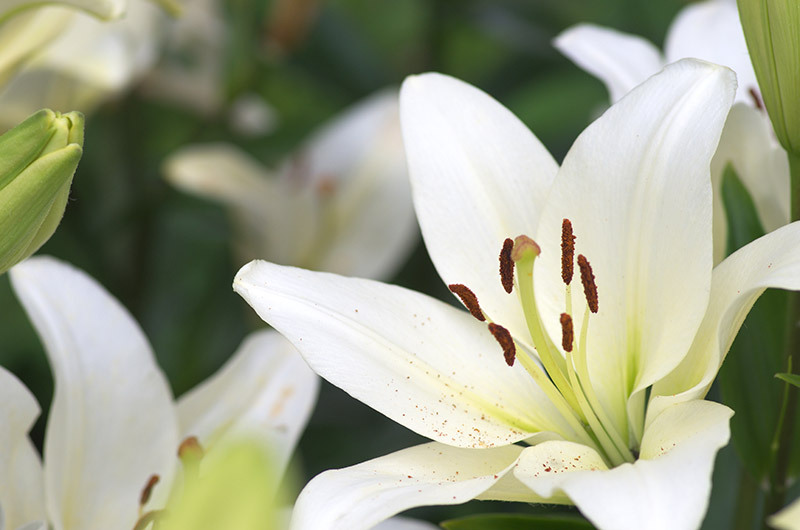Flourishing Orchids: Your Go-To Care Manual
Posted on 03/07/2025
Flourishing Orchids: Your Go-To Care Manual
If you've ever been captivated by the exotic beauty of an orchid, you're not alone. Orchids, with their striking colors and intricate blooms, have enchanted people for centuries. However, these stunning plants can sometimes have a reputation for being finicky or challenging to grow. But fear not! With the right care and guidance, almost anyone can enjoy flourishing orchids at home. In this comprehensive care manual, we'll unveil the secrets to supporting your orchids' health, ensuring they bloom beautifully year after year.
Understanding Orchids: The Basics
Before diving into orchid care, it's crucial to understand what makes these plants unique. Orchids belong to one of the largest and most diverse plant families in the world, with over 25,000 species and more than 100,000 hybrids. They've adapted to thrive in a remarkable range of environments. However, most of the orchids we keep as houseplants originate from warm, tropical regions where they often grow attached to tree branches rather than in soil. Knowing your orchid's background is the first step toward successful cultivation.
- Phalaenopsis (Moth Orchid): One of the most popular varieties for beginners.
- Cattleya: Known for their large, fragrant blooms.
- Oncidium: Sometimes called the "Dancing Lady" orchids.
- Dendrobium: Robust and rewarding with proper care.
All orchids need a balance of light, humidity, temperature, water, and nutrients to flourish. Let's explore each of these requirements in detail.

Light: A Key Ingredient for Flourishing Orchids
Light is pivotal for orchid health and blooming. While individual species have their preferences, most popular orchids favor bright, indirect sunlight. Too little light results in lush leaves but no blooms; too much can scorch delicate foliage.
Identifying Ideal Orchid Lighting Conditions
- Bright, Indirect Light: Place orchids near east or west-facing windows. Sheer curtains help diffuse the sunlight.
- Leaf Clues: Healthy Phalaenopsis leaves are medium green. Dark green indicates inadequate light; yellow or reddish leaves mean too much.
- Artificial Lighting: In low-light homes, use fluorescent or LED grow lights. Set them 12-24 inches above the plants for 12-16 hours per day.
Watering Orchids: Avoiding Common Pitfalls
Proper watering is critical for successful orchid care. Unlike typical houseplants, orchids grown in bark or moss have different water needs. Overwatering is the leading cause of failed orchids, leading to root rot and stunted growth.
How and When to Water Orchids
- Let Medium Dry Slightly: Stick your finger about an inch into the potting mix. If it feels dry, it's time to water.
- Water Thoroughly But Infrequently: Water should run freely from the drainage holes. Never let orchids sit in standing water.
- Use Room-Temperature Water: Avoid using very cold or hot water, which can shock the roots.
- Early Morning Watering: This allows leaves to dry out by nightfall, reducing the risk of fungal infection.
Tip: For most Phalaenopsis, watering once a week is sufficient indoors, but frequency may vary by environment and potting material.
The Orchid Potting Mix: Creating a Healthy Home
Unlike most houseplants, orchids do not grow in regular soil. A loose, well-aerated potting mix is essential for strong, healthy roots.
Best Orchid Potting Media
- Bark Chips: Mimic the natural growing environment. Excellent drainage and airflow.
- Sphagnum Moss: Retains moisture, ideal for environments with low humidity or young orchids.
- Leca (Clay Pellets): Used in semi-hydroponic setups.
- Charcoal, Perlite, Coconut Husk: Often added for extra drainage and stability.
Repotting orchids every 1-2 years refreshes the potting medium and prevents root rot. Choose a transparent pot to allow monitoring of root health and moisture.
Humidity and Temperature: Tropical Comforts
Flourishing orchids require humidity and stable temperatures, mimicking their jungle origins. Most orchids thrive in moderate to high humidity (40-70%) and temperatures around 65-80?F (18-27?C).
How to Boost Orchid Humidity
- Use a Humidity Tray: Fill a shallow tray with pebbles and water, setting orchids on top. The evaporating water raises humidity around the plant without wetting roots.
- Mist Leaves: Mist in the morning to avoid overnight dampness.
- Group Plants Together: Plants naturally create a humid microclimate when clustered.
- Use a Humidifier: Particularly effective in dry, heated rooms.
Protect orchids from sudden temperature changes and cold drafts. At night, a slight temperature drop (about 10?F or 5?C) can even encourage flowering in many species.
Feeding Orchids: Nourishing for Blooms
To cultivate vibrant and healthy orchids, regular feeding is essential -- but less is more. These plants are sensitive to over-fertilizing.
Best Practices for Fertilizing Orchids
- Orchid-Specific Fertilizer: Use a balanced, water-soluble fertilizer labeled for orchids.
- Feed "Weakly, Weekly": Dilute the fertilizer to half or quarter strength and apply every 1-2 weeks during active growth.
- Flush with Water Monthly: To prevent salt buildup, water thoroughly with plain water every month.
Reduce or halt fertilizing during the orchid's dormant period, usually in winter or after blooming.
Repotting Orchids: When and How
Repotting is vital for maintaining flourishing orchid health. Over time, the potting medium breaks down, decreasing aeration and retaining too much moisture.
Signs Your Orchid Needs Repotting
- The potting mix has broken down and appears mushy.
- Roots are circling the inside of the pot or growing out of drainage holes.
- Poor drainage or signs of root rot.
- The orchid hasn't bloomed for over two years.
Steps to Repot an Orchid
- Gently remove the orchid from its pot and shake away old medium.
- Trim any dead or mushy roots with sterilized scissors.
- Place in a clean pot with fresh orchid potting mix.
- Water lightly after repotting, then resume regular care.
Tip: The best time to repot is right after blooming or when new roots start to appear.
Pest and Disease Management for Flourishing Orchids
An important part of orchid maintenance is monitoring for pest and disease threats. Healthy orchids are naturally resistant, but stress and poor conditions can invite trouble.
Common Orchid Pests
- Mealybugs: White, cottony pests that cluster in leaf axils.
- Scale: Small, brown disks on stems and leaves.
- Spider Mites: Fine webbing and yellow-specked leaves.
- Aphids: Green or black soft-bodied insects on new growth.
Control: Wipe affected areas with insecticidal soap, neem oil spray, or rubbing alcohol. Quarantine infested plants.
Orchid Diseases and Preventative Measures
- Root Rot: Caused by overwatering or poor drainage. Remove affected roots and repot.
- Leaf Spot: Fungal or bacterial infections. Trim infected leaves, improve air circulation, and avoid wetting the foliage.
- Bud Blast: Premature bud drop, usually from sudden environment changes.
Prevention: Provide good air movement, avoid waterlogging, and maintain stable temperatures.
Encouraging Orchids to Bloom
One of the joys of successful orchid cultivation is seeing those remarkable blooms return. If your orchid is healthy but not flowering, consider the following:
Tips to Promote Orchid Flowering
- Ensure enough bright, indirect light.
- Provide a difference of about 10?F (5?C) between day and night temperatures.
- Do not over-fertilize; excess nitrogen can inhibit blooming.
- Be patient! Orchids often bloom just once a year, but the flowers can last for months.
Troubleshooting Common Orchid Problems
Despite your best efforts to keep thriving orchids, occasional issues may arise. Here are solutions to some typical orchid challenges:
- Yellowing Leaves: Check for overwatering, excess light, or natural leaf drop.
- Wrinkled, Limp Leaves: Usually a sign of underwatering or root problems.
- Failure to Bloom: Review lighting, feeding, and temperature differences.
- Mushy, Brown Roots: Root rot--repot into fresh medium and adjust watering practices.
Orchid Care Calendar
Staying organized is key to orchid plant prosperity. We recommend keeping an orchid care journal or calendar:
- Weekly: Check watering needs, inspect for pests, and wipe dust from leaves.
- Monthly: Fertilize, flush with plain water, and monitor for root growth or crowding.
- Yearly or Biennially: Repot if needed, replace aging potting medium.
- Seasonally: Adjust humidity and watering for winter or summer changes; stimulate blooming with slight autumn temperature drops.

Special Topics: Advanced Orchid Tips
- Mounting Orchids: For enthusiasts, try securing orchids to bark or wood plaques to mimic their epiphytic lifestyle. Mist roots daily.
- Propagation: Keiki (baby orchids) sometimes grow on stems. When roots reach 1-2 inches, carefully remove and pot up.
- Orchid Shows and Societies: Join local clubs for advice, inspiration, and networking with fellow growers.
Conclusion: Flourishing Orchids Await
Orchids are more resilient and rewarding than many believe. With the right care, patience, and knowledge from this manual, you can master the art of growing radiant, healthy orchids that bloom year after year. Remember, the secret to thriving orchids is balancing light, water, humidity, and nutrition. Don't be discouraged by setbacks--they're natural learning opportunities.
Start your orchid journey today, and let your home come alive with the magic of flourishing orchid plants!
Keywords: Flourishing orchids, orchid care manual, orchid cultivation, healthy orchids, growing orchids, how to care for orchids, blooming orchids, resilient orchids.
Latest Posts
Nature's Mood-Booster: Finding Joy and Well-Being Through Flowers
A Valentine's Tradition: The Red Rose Symbol
Liven Up Your Office with These Easy-Care Plant Options





